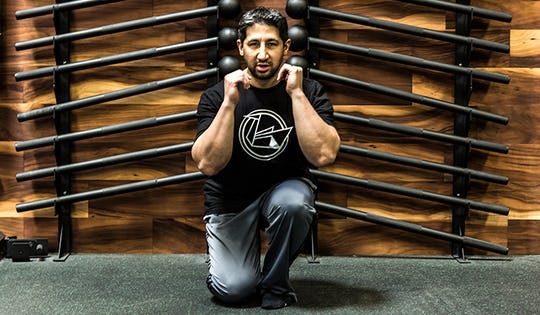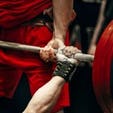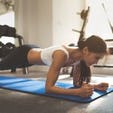The skill of the week at the Onnit Academy Gym is the Bodyweight Skater Squat. In this specific case we are using the Skater Squat to help you understand the need for complete control of your bodyweight, even when your foot is unsupported.
The purpose is to improve mobility and progressively enhance work capacity. That is what we do every week here at the Onnit Academy Gym, we use the opportunity to build some skills in a specific movement pattern one week, then use that as part of a platform for increasing performance the following week.
The Skater Squat should take priority in your single leg training and that is why we teach this version of the squat here. It is a great way to develop single leg strength by bringing awareness to the rotational elements of your body.
Keys to the Bodyweight Skater Squat
The Single Leg Predicament
- When you are doing the Skater Squat there are a lot of qualitative functions that come into play. You are on one foot, and anytime you are on one leg, your body wants to rotate to compensate for the lack of having both feet down on the ground.
- Your hips will want to rotate along with everything below your hips, namely the knee of the supporting leg. That particular component of the drill is actually one of the harder things for a lot of people to control; you will naturally let the knee drift inward towards the midline or even across their midline, because of a lack of stability and balance.
- It is really important not to let that happen because that puts a lot of strain on the internal portion of the knee, so controlling that knee is one important aspect that you are looking for.
Hip Rotation Concerns
- Hip rotation is another key component. You want your hips and shoulders to remain square throughout the entire drill, so don’t let them drift, rotating side to side or dropping one shoulder lower than the other.
- Everything should look like it was from the hips up, perfectly aligned; just as if you were standing on two feet.
Maintaining a Vertical Spine
- Ideally, you will have a vertical spine with shoulders over the hips and the Skater Squat is a great exploration on that.
- There are a variety of squatting techniques and none of them are necessarily bad, but they serve different purposes.
- A powerlifting squat, or low bar squat, is a very hinge-heavy squat technique where your hips go back and your shins stay relatively vertical. Generally, you will see a lot of people using a technique like this, telling you not to let your knees drift forward past the toes, while they will be drifting past your toes during this variation.
Ankle Flexibility
- In this particular Skater Squat variation it is really important to develop ankle flexibility; this will allow the knee to push forward over the toes, so you can remain as vertical as possible. Otherwise, your hips have to go back and you only have so much room to work within the lever systems of your body.
- So, letting the knee drift forward, but not collapsing in allows you to have your spine to be stacked over your hips. Now as you do this, you are really exposing yourself to single leg training in a much more accessible way then what a lot of people will commonly look to accomplish.
- When most people single leg train, their sole focus is on the pistol squat. A pistol squat is an awesome drill, but it is not as easily accessible as the Skater Squat for most people. This drill carries directly over to a more vertical spine variation of a squat technique, if you can just shift that work from your hips.
Conclusion
The Skater Squat is a great drill to help you prepare for our upcoming Rite of the Week, in this case it is the Single Leg Burpee using the Battle Rings. In this move you will elevate your rear foot and perform a Bulgarian Split Squat down into a Burpee.
The Skater Squat takes the same movement that we use in the Single Leg Burpee and puts it to the test. We use a variety of different progressions to achieve this, such as toe on the ground, toe on the ground for the descent, and lifting the toe on the way up.
Ideally, you should be working to the point where you have your foot off the ground, toe pointed back, and shin parallel to the earth for the entire duration of the exercise.


)





